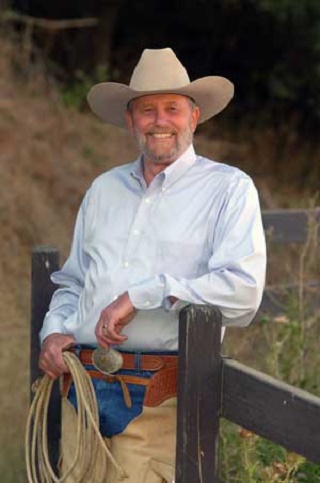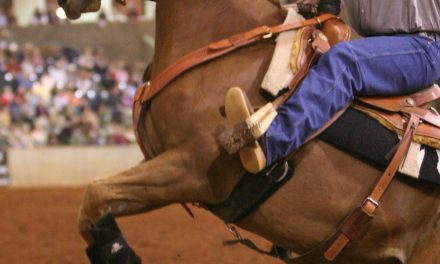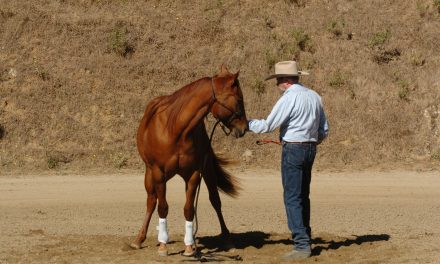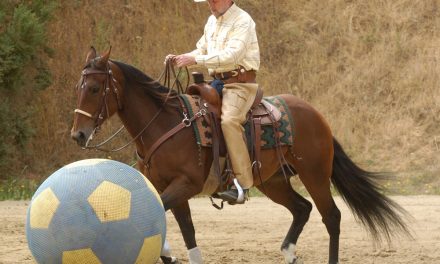 One of the current topics of discussion and an important part of horsemanship is timing and feel. For me it is more correct to say feel and timing. You must feel what the horse is doing and then act promptly. Let’s look at what these aspects are and why they are important? Part of feel and timing is understanding the language of the horse. If you understand the language of the horse, the horse’s dynamics and how it responds to life and the horses around it, you can have a better understanding of how the horse thinks and how it responds to stimulus around it.
One of the current topics of discussion and an important part of horsemanship is timing and feel. For me it is more correct to say feel and timing. You must feel what the horse is doing and then act promptly. Let’s look at what these aspects are and why they are important? Part of feel and timing is understanding the language of the horse. If you understand the language of the horse, the horse’s dynamics and how it responds to life and the horses around it, you can have a better understanding of how the horse thinks and how it responds to stimulus around it.
First of all, horses learn by pressure/release so let’s break that down a bit. Pressure, could mean that something out of the ordinary alerts or spooks the horse. The horse naturally goes into flight mode, but if cornered, the horse will fight. This is part of the herd mentality or instinct. Every horse has it but it is stronger in some than others. What I like to say is that all horses come from the factory with the flight/fight instinct. It is important to understand this because when we are working with a horse we need to be able to predict how that horse will respond to what we are asking it to do.
When I am working in the round pen I like to move the horse around at a good forward trot or a quiet canter if possible. What I am doing is controlling the horse’s feet. Some people look at round pen work as just chasing the horse around and that is what some people do. They chase the horse around and miss the opportunity of evaluating the horse and looking for indications or signs. They do not realize that controlling the horse’s feet is what motivates a horse to make the change we are asking for because when we control the horse’s feet, we control the mind.
When I ask a horse to go forward in the round pen, it is likely that in the beginning the horse will be looking to the outside of the round pen because it is in flight mode. I may move the horse around four, five, six or more times and watch and feel for the change in the horse’s demeanor when that horse turns its eye into me. That is an opportunity to ask the horse to either turn into me or to change directions. To be aware of what the horse is doing is feel and we need to be educated enough to recognize the change in the horse’s demeanor, then we can ask for the change in direction and release of pressure. Timing is using that opportunity to ask for the change. Timing is also critical for taking the pressure off the horse. If I want the horse to turn into me, I back away and take the pressure off. If I don’t take the pressure off, I am continuing to ask the horse to go forward in flight mode. So we have both feel and timing demonstrated in this situation.
Feel is recognizing when the horse responds to something in a desirable way. If I ask the horse to turn to the inside when it is looking outside, that horse is not engaged mentally with me. The horse is not thinking about me or considering what I am asking. It is useless to ask the horse to turn to the inside and face me, and change directions.
Timing is always releasing on something that is desirable, even if it is only one step. If the horse is looking to the inside, that is desirable. I will not be able to get the horse to turn and face me and change directions if it is looking to the outside. I can reward the try, the look toward me, but what happens if I don’t get the desired response of a stop and turn or change of direction? What we have to do as handlers is to drive the horse back forward again and make the request again. This is being consistent and sometimes we must be persistent, which is part of the many elements that go along with feel and timing.
Right now I have a new horse here at the barn that has no problem accepting a saddle or rider but when I mount, he wants to run through my hands and he doesn’t know how to be guided. In other words, if I ask him to go straight he goes left or he veers right. This horse needs to be re-schooled so let’s look at how feel and timing will effect this training. I can feel this horse lean into my leg and rein, and go toward the left. Learning to feel that movement is a part of learning “feel.” What we must do as riders is ask the horse to move back to the line of travel. I pick a spot at the end of the arena, a number or a cone, and I aim for that desired spot. When the horse veers to the left, I ask the horse to move to the right. Timing comes into play because when I feel the horse start to move left, I ask the horse to move right. The quicker I ask, the quicker the horse will learn the lesson. I feel the horse make a change in travel as it goes right. I’m not going to try to hold the horse on the line, I am going to make a complete shift of the body to the right and feel that shoulder move to the right and go past the original line of travel. Timing is giving the cue as soon as I feel the horse come off the line. The release comes after I have shifted the body to the right, and again, that is “feel.”
Feel and timing are different with different horses. If I have a finished horse, feel is different than with a horse that is new under saddle. That horse will run through the rein and will not listen to the leg cue. We need to ask for more of a try than we do with a finished horse. A finished horse is very responsive to the leg, rein and seat aids and we must be more sensitive to feel the subtle changes.
Feel can be very elusive depending on the degree of training and what the horse is learning. When I am teaching a finished horse something new, that feel will be different. I may feel resistance and that resistance will lessen as the horse begins to learn the lesson. Feel is identifying that change and timing is to release quickly when we feel that change.
The problem comes because many of us that enjoy riding can’t feel the changes. Last week in our group lesson I asked the riders to make circles around a cone. Most of the horses were finished enough, or as I like to say broke enough, that they could be steered in a circle but there was no soft bend in the horse’s body so there was no shape to the circles. One of the hardest things I had to do was to get the riders to feel that bend once they created the circle, in this case, with the use of the legs aids. Once they experienced the feel it was easier to teach the horses to bend softly and make nice pretty circles around the cones. You can do this exercise with a rock or any object. If your horse drops a shoulder to the inside, the circle will be misshapen. You must feel the shoulder drop and immediately correct it. Feel and timing are both very important in this exercise.
We must learn and experience feel and timing. The quicker you can feel the problem and the quicker you correct it, and the quicker the horse will learn. When I am in the round pen asking for an inside turn and the horse stops and does an outside turn, if I wait and let that horse travel most of a full lap around before correcting it, I will have a difficult time getting the horse to make an inside turn. The timing was too late as there is a very short window of time, as little as three seconds, for the horse to connect the correction. The quicker you can correct the unwanted movement, the quicker the horse can learn; that is timing. With experience, you get to a point where you not only see the horse looking to the outside but you detect in the horse’s eyes and body that he is thinking about changing directions before he makes the move. The thought is as good as the deed. That is spot on timing.
Once I was trailer loading a horse that had already been through a couple of trainers who had tried to load him. He was a nice enough horse but he had developed some bad habits around trailer loading. It is not unusual for a horse to balk at the back of a trailer because it may be perceived as a cave or black hole. What is important is that when we are dealing with this situation, we must take it one step at a time. We must first get the horse to the back of the trailer. Most people have the mind set to lead the horse right into the trailer, my mind tells me to just get to the back of the trailer. Then it is just one foot in the trailer and then maybe it is two feet.
The problem with this horse was that he would run between the handler and the trailer. There are six different directions a horse can go; up or down, right or left, forward or back; these are escape routes. This applies to any activity you do with a horse. We always need to remember that a horse has the flight instinct whether it wants to avoid a creek or a mud puddle, a cavaletti or a tarp that you want to go across. In my situation I needed to make the trailer door okay to enter. That is not going to be accomplished by attempting to force the horse into the trailer. What you must do is block the escape routes. If the horse backs up, you stay with it and ask it to go forward with whatever tool you have, maybe swinging the rope, or I use a longer dressage stick, until the horse takes one step forward. This horse had learned to load before but something had happened and the horse had learned to balk. Many times a horse will balk and the owner will circle the horse around and try again. All the owner has done is create an escape route. Sometimes the owner has not developed a strong enough forward cue with the horse so that the horse knows to step up or walk up the ramp.
This horse would run suddenly and violently between the handler and the trailer. I had enough experience with trailer loading to recognize signals and I knew by the look in his eye that the horse was going to come over the top of me. I corrected it by blocking the shoulder before the shoulder moved into me. The owner got a little upset with me because the horse wasn’t actually running into me but I told him the thought was as good as the deed. I saw the intent before it manifested physically. That was good timing on my part and if I correct a problem sooner than later that helps the horse to learn. I then asked the horse to go into the trailer and he went right in. It wasn’t a perfect load but the process could stop because the response was positive. Feel was knowing when that horse was going to move into me; my timing was spot on and I used enough pressure to make a change in the behavior of that horse.
I corrected the horse firmly and the horse recognized that the behavior was not an option. In this case, the horse took a step forward. Blocking the escape routes and a strong forward cue are key elements in trailer loading. Both require feel and timing.
This is my way, and I think it is a good way, of explaining feel and timing. The more experience you have working with horses on the ground and under saddle, the better your feel and timing will be, and the better horseman you will become.





